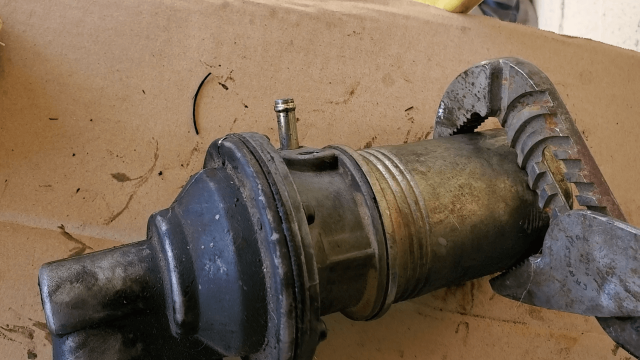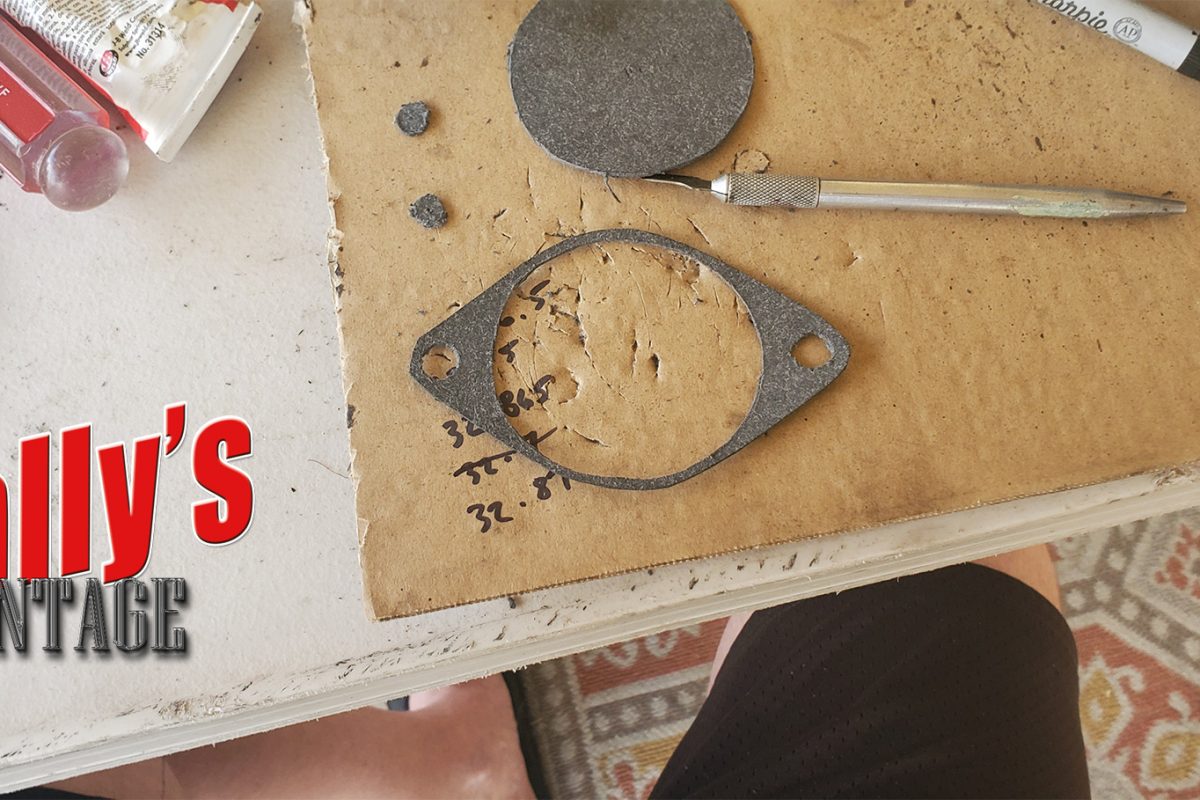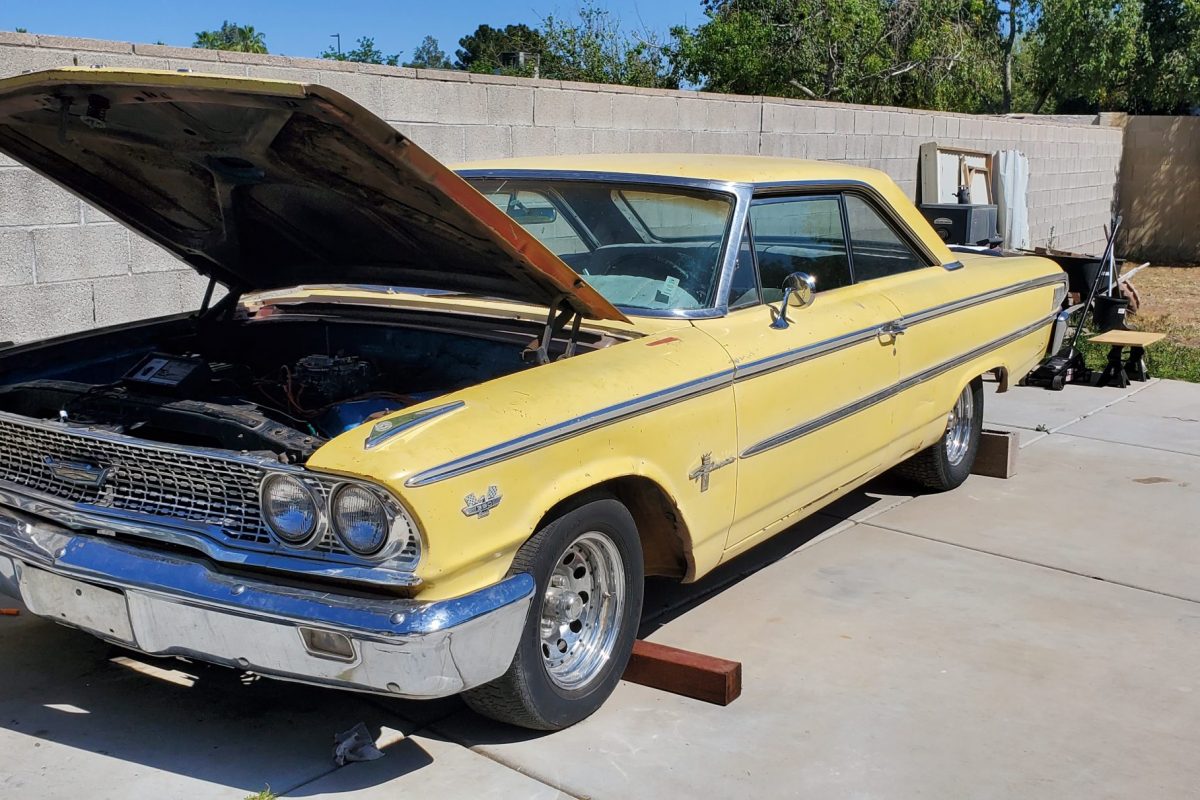How to Remove the Fuel Filter on a Mechanical Fuel Pump
Difficulty: Easy
Skill level: Beginner
The fuel filter on a mechanical fuel pump can often times be stuck. The removable canister on the fuel pump is usually covered in grime, it doesn’t have a flat surface, and there’s not much to use for leverage. So how do you remove it? We tried several tools but in the end, a good pair of Channel Lock pliers will do the trick. Just make sure not to squeeze so hard that you bend the fuel canister.
- Remove the fuel pump from the engine
Usually there’s not enough room in the engine compartment to get a pair of channel locks down in there. Remove the fuel pump by disconnecting the fuel lines that go into and out of your fuel pump. Usually, there are two total. One fuel line that runs from the gas tank and into the fuel pump. And the other runs out of the fuel pump and carries fuel up to the carburetor. - Clean the fuel canister (Optional)
Set the fuel pump on a bench/table and clean the fuel filter canister with a rag and some mild degreaser or even some Dawn soap. If you have stronger cleaners like brake cleaner, you can use that too but make sure to wear nitrile gloves as it does contain hazardous chemicals you don’t want absorbing through your skin. Depending on how clean yours is, you might be able to avoid this and get right down to business. - Use Channel Lock Pliers to remove the canister
Without applying too much force, widen your channel locks to the channel that is closest to the diameter of the fuel canister. Set your channel locks at the bottom of the canister, about a 1/2″ from the bottom – it’s the strongest area of the canister and least likely to bend. Apply pressure and turn counter-clockwise to loosen. Repair tip: Make sure not to apply too much pressure onto the fuel pump arm during this process. There’s not much to grab onto to secure the pump while you try to loosen the canister, so be mindful not to apply too much pressure to the pump arm – you certainly don’t want to bend it. The fuel canister should now screw off and you’re free to remove, clean, or replace the fuel filter.
Channel lock pliers work best That’s it! You’re all set to keep making progress with your car repair or classic car restoration. For tips on re-application and reinstallation of the fuel pump, see below.
- Reattach the fuel filter canister
Apply light pressure (just as you did to remove it) to the fuel canister with your channel locks to secure it tightly to the fuel pump. Simply reverse your steps to reattach the fuel pump. Make sure your fuel line connections are nice and secure. Allow your engine to turn over for 8-10 seconds to allow the fuel pump canister to refill with gas and properly start pumping fuel up to the carburetor again.
Which cars use a mechanical fuel pump?
American automobile manufacturers have been using mechanical fuel pumps back in the 1920s once they moved the fuel tanks to the rear of the car. They needed a way to create constant and sufficient pressure within the fuel system that would allow the fuel to get pulled from the rear of the car, all the way up to the front of the car where the engine was located.
As this pressure needed to be constant from the time the ignition was turned, it was installed/attached to the engine and driven by a lever that would move up or down. The lever was activated by a cam lobe, and the cam lobe was driven by the revolving gears of the engine. This process of “pumping action”, actuated by the turning of the car’s engine, assured that pressure would be constantly applied the entire time the engine was running.
Ford, Chevy, Dodge and many others used mechanical fuel pumps in their cars all the way up to the late 80s (and still do today). However, as fuel injection was introduced and gained in popularity, fuel system pressure requirements began to increase as a result. Leading to an increase in electric fuel pumps and other means to create higher pressures.
Fuel Filter Tip:
Even though a mechanical fuel pump contains its own fuel filter, it’s best to always use an inline fuel filter (aka last chance filter) and apply it to the incoming line of the fuel pump. It’s better to filter fuel before it ever gets to your pump. It’s also a lot quicker to replace than the fuel filter in a mechanical fuel pump. If a car has been regularly maintained, the inline fuel filter is most likely all you’ll ever need to worry about replacing. This practice also creates a cleaner fuel system overall and eliminates fuel system and more complex carburetor-related fuel system problems.



